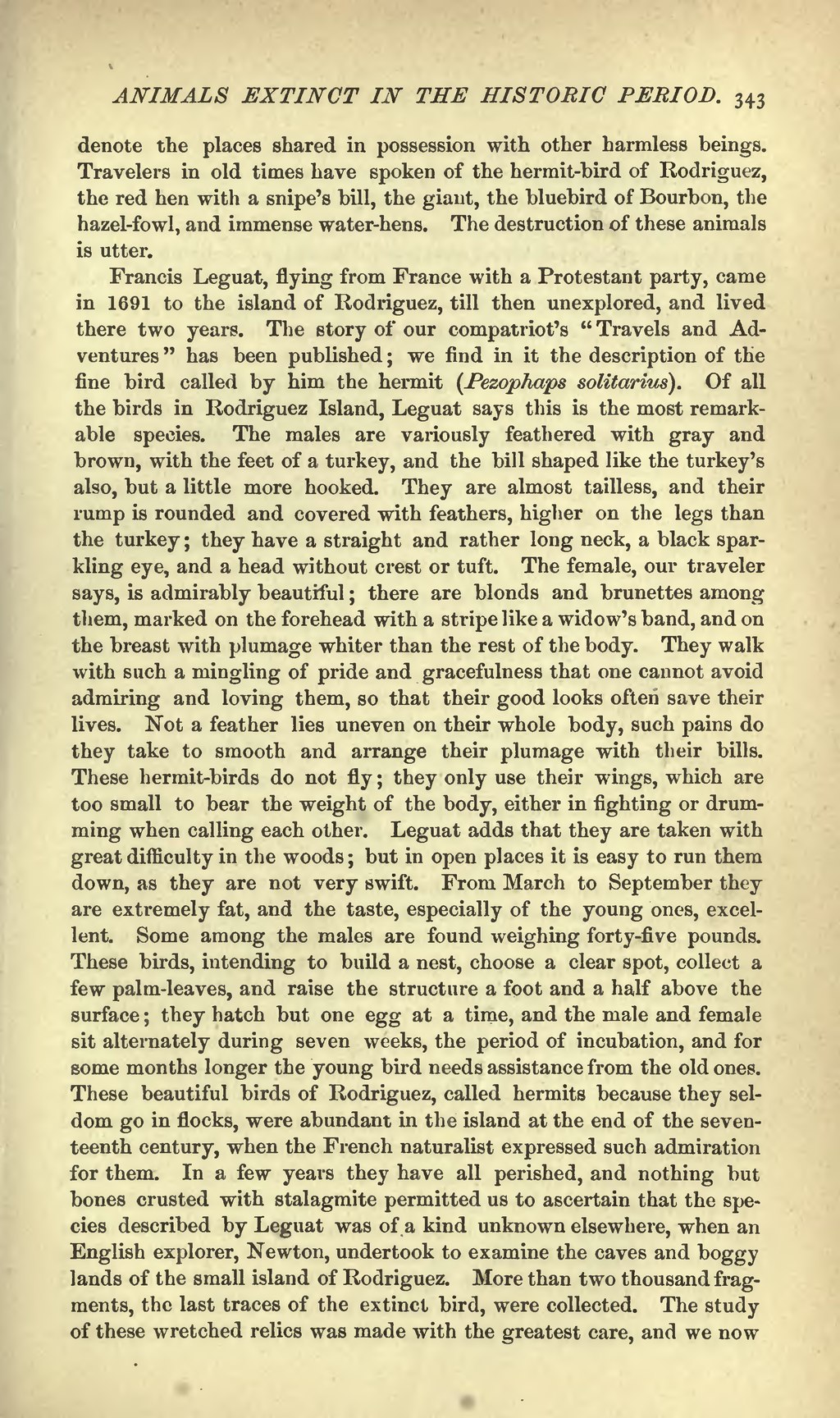denote the places shared in possession with other harmless beings. Travelers in old times have spoken of the hermit-bird of Rodriguez, the red hen with a snipe's bill, the giant, the bluebird of Bourbon, the hazel-fowl, and immense water-hens. The destruction of these animals is utter.
Francis Leguat, flying from France with a Protestant party, came in 1691 to the island of Rodriguez, till then unexplored, and lived there two years. The story of our compatriot's "Travels and Adventures" has been published; we find in it the description of the fine bird called by him the hermit (Pezophaps solitarius). Of all the birds in Rodriguez Island, Leguat says this is the most remarkable species. The males are variously feathered with gray and brown, with the feet of a turkey, and the bill shaped like the turkey's also, but a little more hooked. They are almost tailless, and their rump is rounded and covered with feathers, higher on the legs than the turkey; they have a straight and rather long neck, a black sparkling eye, and a head without crest or tuft. The female, our traveler says, is admirably beautiful; there are blonds and brunettes among them, marked on the forehead with a stripe like a widow's band, and on the breast with plumage whiter than the rest of the body. They walk with such a mingling of pride and gracefulness that one cannot avoid admiring and loving them, so that their good looks often save their lives. Not a feather lies uneven on their whole body, such pains do they take to smooth and arrange their plumage with their bills. These hermit-birds do not fly; they only use their wings, which are too small to bear the weight of the body, either in fighting or drumming when calling each other. Leguat adds that they are taken with great difficulty in the woods; but in open places it is easy to run them down, as they are not very swift. From March to September they are extremely fat, and the taste, especially of the young ones, excellent. Some among the males are found weighing forty-five pounds. These birds, intending to build a nest, choose a clear spot, collect a few palm-leaves, and raise the structure a foot and a half above the surface; they hatch but one egg at a time, and the male and female sit alternately during seven weeks, the period of incubation, and for some months longer the young bird needs assistance from the old ones. These beautiful birds of Rodriguez, called hermits because they seldom go in flocks, were abundant in the island at the end of the seventeenth century, when the French naturalist expressed such admiration for them. In a few years they have all perished, and nothing but bones crusted with stalagmite permitted us to ascertain that the species described by Leguat was of a kind unknown elsewhere, when an English explorer, Newton, undertook to examine the caves and boggy lands of the small island of Rodriguez. More than two thousand fragments, the last traces of the extinct bird, were collected. The study of these wretched relics was made with the greatest care, and we now
